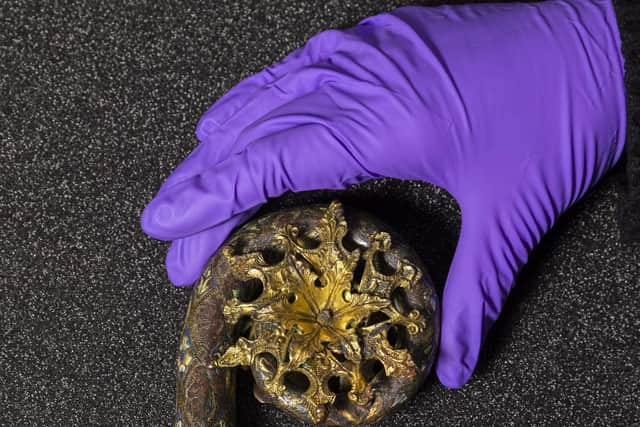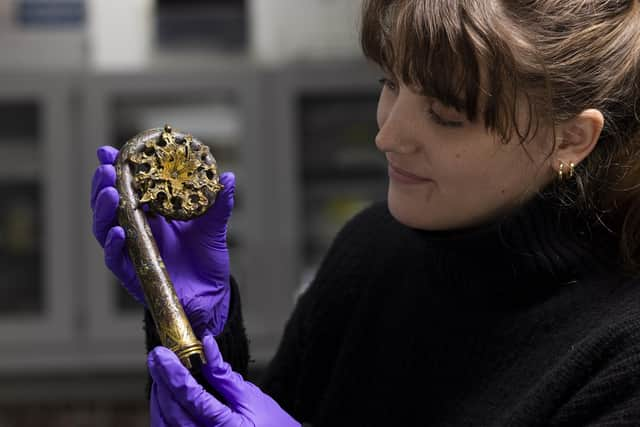Bishop's crook last held 700 years ago journeys back to where it was buried in a grave of great riches
A ‘exquisite' medieval crozier last held by a bishop in Scotland more than 700 years ago to project power over his flock is going on show close to where it was buried alongside its owner.
The crozier, excavated from the grave of Bishop Henry who died in the late 13th Century, is held by National Museums Scotland and now heading back to Whithorn in Dumfries and Galloway.
Advertisement
Hide AdAdvertisement
Hide AdThere, it will go on display at the exhibition of Face to Face with Whithorn's Bishops, where a facial reconstruction of Bishop Henry is revealed.


Dr Alice Blackwell, senior Curator of Medieval Archaeology and History at National Museums Scotland: “The crozier is an object with significant local resonance and profile and we are delighted to support its return to Whithorn, on loan from National Museums Scotland."
Croziers were a symbol of power used only by the most important religious leaders of the time with the staffs usually resembling elaborate shepherd’s crooks, symbolising a bishop’s role as overseer of their ‘flock’.
The hooked crook was also in use in 1329 when King Robert visited Whithorn on his last pilgrimage, it is known.
Ms Blackwell said The Whithorn Crozier was a particularly exquisite example of medieval craftsmanship which dated to the late 12th century and made from gilt bronze and adorned with enamel inlay.


It was discovered during the excavation of the bishops’ graves at Whithorn in the 1950s and 1960s which shed great light on life in this early Christian centre.
The graves were found at the Premonstratensian priory of Whithorn, which also served as the cathedral for the bishops of Galloway, who were, at least for a time, buried before the high altar.
At least 28 graves were discovered in total, many likely to have been religious donors and their families, including women and children. At least four individuals wore gold or silver rings, set with amethysts, emeralds and sapphires.
Advertisement
Hide AdAdvertisement
Hide AdNMS said that stable isotope analysis, which studies the chemicals absorbed into bones and teeth, were carried out to reveal more about the diet and geography of an individual. Tests showed the bishops were more likely to have come from outside of Galloway, and ate a more marine-heavy diet.
The cathedral and priory had been re-founded in the 12th Century, but Whithorn had been a famous church for much longer. .
According to an article published by NMS, the first named Christian in Scotland was Latinus of Whithorn who lived in the 5th Century.
The site later became famous as the shrine of St Ninian, a legendary bishop who was remembered for his missionary work in southern Scotland. By the 8th Century, Ninian’s life story had become famous, and his shrine continued to receive pilgrims and royal patronage throughout the medieval period.
Dr Blackwell added: “We are committed to bringing the National Collection to audiences across Scotland, and championing local heritage. We hope visitors to Face to Face with Whithorn's Bishops are inspired by this remarkable object to learn more about the fascinating history of the area.”
Comments
Want to join the conversation? Please or to comment on this article.